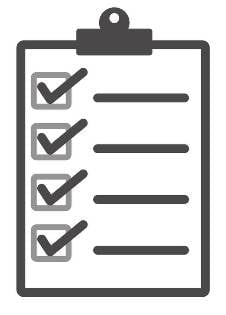When it comes to ensuring the protection and safety of lone workers, a blanket policy is rarely sufficient. Your lone working policy needs to be tailored to each task and to each location. In some instances, it will need to meet the individual needs of the lone workers themselves. With a bespoke strategy in place, you’ll reduce the chances of an incident occurring and the severity of the outcome.
But just because your policy needs to be customized doesn’t mean it’ll be complicated and time consuming to piece together. Lone working policies are logical documents that are well structured, easy to read, and accessible to those who need it most: your lone employees. No matter what industry the policies cover, there are certain key points everyone needs to include – key points that are easy to make your own.
They include:
Applicable Laws
A quick glance at any lone working procedure example and you’re sure to see a section on local lone working legislation. The laws vary greatly between countries and even states/provinces, so be sure to find out exactly what is required. (See local legislation here.) Some regions are quite progressive in this matter and have specific work-alone legislation in place, while others may follow a more general “duty of care” clause.
Whichever laws apply to your workplace, they need to be considered in your policy to ensure compliance and to ensure the highest safety standards are met. It’s best to include specific details on the applicable legislation, such as the names of the acts, so employees can reference them if need be. Within the policy you can highlight the parts of the legislation that pertain to the task at hand, such as prohibited activities/situations or required security measures.
Employee Responsibilities
All employees have a duty to comply with the lone worker policy, and to accept the element of personal responsibility for their own safety. It’s not enough to simply state this, however. You need to spell out exactly what it is that employees must do. Depending on the job description, the responsibilities could include things such as:
- Asking for clarification on the policy when needed
- Requesting additional training for any portion of the policy or for their position itself
- Ensuring safe conduct – employees should not knowingly place themselves in situations which expose them to additional risk
- Wearing the proper personal protective equipment
- Reporting all hazards
- Completing a lone working checklist (for example, a safety checklist for specified equipment or high-risk activities)
- For drivers, ensuring their vehicle is in good working order, and that they take appropriate breaks
- Arranging meetings in public places whenever possible
- Using all safety devices provided to them
- Keeping their lone worker safety device, such as a smartphone equipped with an app, in good working order with a fully charged battery
Keep in mind these are general suggestions. Your own policy should include responsibilities with more specific details related to the employees and task(s) in question.
Risk Assessment
This is the most personalized area. Each job presents specific risks, and it’s up to the employer to assess these risks and take steps to avoid or control them when necessary.
Risk assessments are incredibly important, as they have a direct effect on the health and safety of your lone workers. To make the process easier for you, we created a lone working risk assessment guide that will help you look for potential hazards and identify their consequences, exposure levels, and probabilities. From there, it’s easy to create unique risk scores for each of your workers that will help shape a truly effective lone working safety policy.
Having a well-designed policy for your lone workers is a crucial component of ensuring workplace safety. It is essential to combine your policy with the most up-to-date lone worker technology available. This approach will provide both you and your lone workers with confidence in the knowledge that everyone’s top priority is maintaining health and safety in the workplace. By implementing an effective lone worker policy and investing in the latest technology, you can help to prevent potential accidents or incidents from occurring, and minimize the risks associated with working alone.
We have included a Lone Working Policy example that you can amend to suit your own needs.
Want a Free Lone Worker Policy Template and Lone Working Checklist? Please email us at [email protected] and we will send you the guide.

